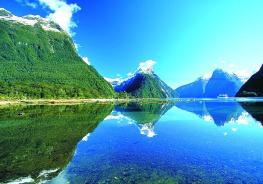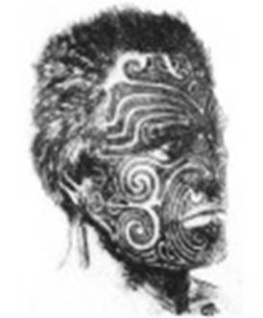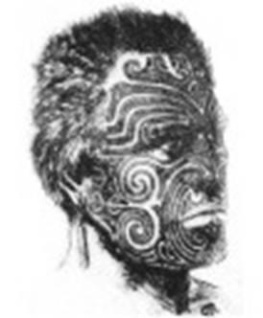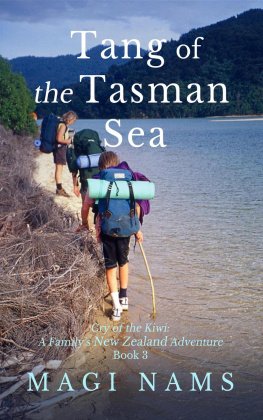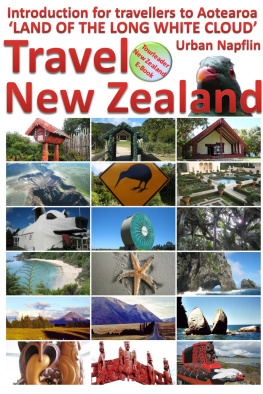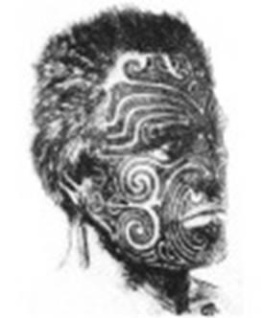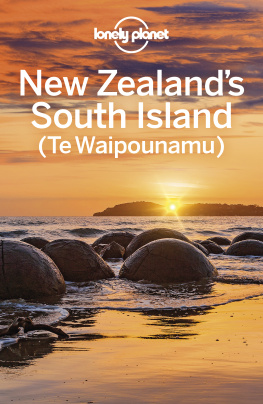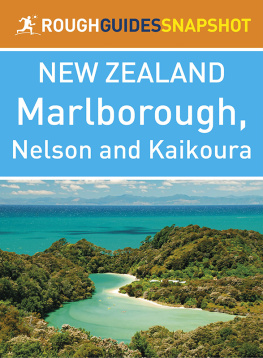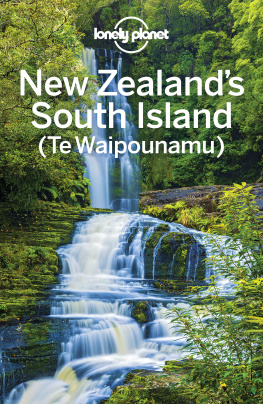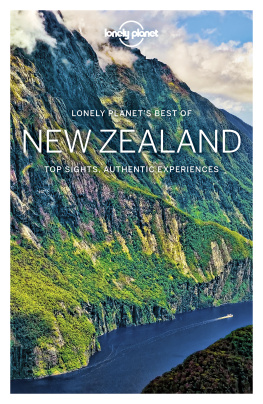
South Island
Marlborough
Introduction
W ine, water and wilderness. Those are the buzzwords in Marlborough, one of the sunniest regions in New Zealand. Straddling the top of the South Island, Marlborough is the place where most tourists are introduced to the less-populated, slower-going mainland as they cross the Cook Strait from Wellington to Picton.

South Island from space
Captain James Cook first arrived in 1769 and, on his three journeys around the world, chose the Queen Charlotte Sound (which he named after the wife of King George III) to visit five times coming here more than any other place on the planet. Often, tourists arrive and feel that same draw to return. I know that I did. During my first four years in New Zealand, I spent over half of my time here. Until I began traveling for this book, Marlborough was my home.
Geographically, Marlborough encompasses the intricate Marlborough Sounds, the long flat Wairau plains and the hilly high country valleys of Awatere and Waihope. Three major rivers carve the bottomland of Marlborough: the Taylor, Opawa, and Wairau, all beginning in the mountains and terminating in the Pacific Ocean.
Did you know? As the Earth moves on the Alpine and Pacific faults, the rest of New Zealand rises slowly out of the water, the land masses of the Marlborough Sounds sink gently back into the sea.
Like most of the South Island, Marlborough doesnt have as strong a Maori influence as the North Island, but the Maori are believed to have inhabited the region for nearly 1,000 years. The biggest skirmish between Europeans and Maori has been named the Wairau Incident. There is a monument to it on SH1 near Koromiko/Spring Creek. (See the Nelson chapter, for details.) European settlement brought farming and whaling and, in the 1830s, the whaling station at Port Underwood was one of the largest in the world. Gold and antimony were mined sporadically and many of the walking tracks are leftovers from the mining era.

Tourism and agriculture (including wine) are the main activities and sources of revenue. Its nearly impossible to say Marlborough without saying Marlborough Sauvignon Blanc, so popular is the wine here. As more and more grapes are planted to meet a global demand, it seems that the entire province is carpeted in vineyards. But thats not so, as you will see if you venture off the main routes, past the wineries, and explore what this province has tucked away in its hills, forests and rivers. The overseas popularity of New Zealand Greenshell mussels has given rise to a burgeoning aquaculture and processing industry, a wealthy addition to commercial fishing and salmon farming.

Getting Here
The Interisland Line operates a frequent ferry service for foot and vehicle passengers and has a fleet of three ships. Each offers a variety of facilities, including bars, cafs, childrens play area and movie theater. Interisland line ferry prices are tiered, just like airlines, so it pays to book ahead. Fares for foot passengers begin at $25 one-way, vehicles at $105. The crossing takes about three hours. Bookings can be made through information centers, www.interislandline.co.nz or by calling tel. 0800-802-802.
The Bluebridge ferry, the Santa Regina, sails between the North and South Islands twice daily and offers foot and vehicle passage. The Santa Regina also has restaurants, bars and entertainment areas, with the added bonus of long couches to stretch out on during night sailing. Fares are set ($40 per adult, $110 per car) and bookings are made directly with Bluebridge at www.bluebridge.co.nz, or by calling tel. 0800-844-844.
Marlborough is served by three airlines Air New Zealand (www.airnewzealand.co.nz, tel. 09-357-3000 or 0800-737-000) and Origin Pacific (www.originpacific.co.nz, tel. 0800-302-302). They fly between Blenheim and the rest of the country, while SoundsAir offers flights between Picton and Wellington. Contact Sounds Air, www.soundsair.com, at the rail station in Picton or at tel. 0800-505-505.
Tip: If you are planning to travel in both directions across Cook Strait, do yourself a favor fly SoundsAir one way and take the ferry the other, getting to see the Sounds from two different vantages.
The TranzCoastal originates in Christchurch at 7:30 each morning, arriving in Blenheim at 12:20 and Picton at 12:50 pm. The return service departs Picton at 1:40 pm and Blenheim at 2:10, arriving in Christchurch at 7 pm. Fares from Christchurch to Picton (or Picton to Christchurch) begin at $35. In Blenheim, the rail station is on Grove Road and is the site of the information center; in Picton, the rail station is on Auckland Street, immediately across the street from the information center. Book through the information centers, www.tranzscenic.co.nz or by calling tel. 0800-872-467.
The main highways entering Marlborough are SH63 from the West Coast, SH6 from Nelson, and SH1 from Christchurch. Blenheim is approximately 1 hours from either Kaikoura or Nelson and four hours from Christchurch. Picton and Blenheim are about 25 minutes apart.
The South Island in general, and Marlborough in particular, is serviced by InterCityCoachlines and a variety of smaller shuttle buses, including Atomic Shuttles, East Coast Express, South Island Connections and Kahurangi Bus Lines. There are also smaller companies that service specific areas, like Abel Tasman Coaches and Hanmer Connection. I think the best way to arrange for transport on any of them is to visit one of the information centers, as schedules and companies change frequently. As I was finishing up this chapter, two shuttle companies were merging into one and another had stopped service.
If you are traveling around the South Island with a bicycle and want to take it on a bus, book with one of the smaller shuttle companies theyll guarantee a space for your bike. InterCity takes bikes on a space-available basis and its at the discretion of the driver.
Information Sources
Destination Marlborough is the tourism board for this region and can be visited at www.destinationmarlborough.com.
Picton
More than just a port town, Picton is the jumping-off point for exploration of the Queen Charlotte Sound and Queen Charlotte Track, and a destination in its own right.
The Visitor Information Centre and Department of Conservation office are located in the same facility on Auckland Street, directly across from the train station and at the end of the car park for the ferry terminal. pvic@destinationmarlborough.com, tel. 03 520-3113, fax 03-573-5021. For DoC information, tel. 03-520-3002.
On Water
Next page
